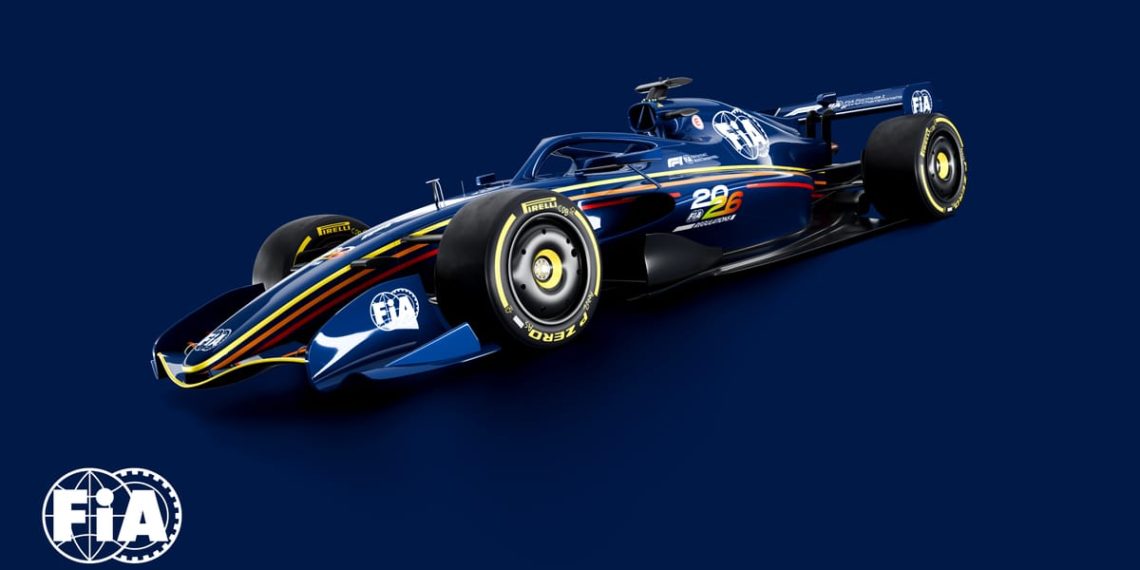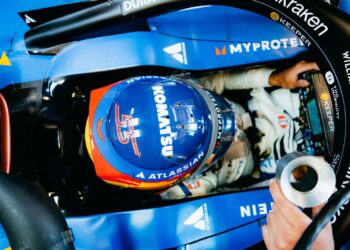During the announcement of the FIA rules for 2026, a significant statement was made regarding the performance goals of the next generation of Formula 1 cars. The section discussing the narrower tires mentioned the objective of maintaining grip with minimal loss. While this may seem simple, achieving it is not as straightforward due to the reduction in width of the front and rear tires. The front tires will be 25mm narrower, representing a reduction of 8.2%, while the rear tires will be 30mm narrower, a reduction of 7.4%. This reduction is necessary to decrease drag by 55%. The FIA’s Technical Director for single-seaters, Jan Monchaux, ensures that this objective was discussed and agreed upon with Pirelli, the F1 tire supplier. However, achieving this goal will still be a challenge, especially considering the additional objective of reducing the weight of a set of tires by four to five kilograms, reaching approximately 46kg. Additionally, the tire diameter will be reduced by seven millimeters.
A change in the tire development program for 2026 that will make things easier is the decision to abandon the plan to switch to 16-inch wheel rims. Initially, this change aimed to reduce weight. However, it was found that it would not have a significant impact on weight reduction, and Pirelli was concerned that it would make it difficult to address overheating and temperature sensitivity issues. The head of Pirelli F1, Mario Isola, explains that keeping the 18-inch tires was accepted as a proposal to address these concerns.
The prototype tire tests are scheduled to begin in September, with a deadline for final approval set for 12 months later. Pirelli is currently using simulation tools to design the prototype, but acknowledges that track tests will be crucial. FIA’s Single-Seater Director, Nikolas Tombazis, states that Pirelli has been given increased opportunities and time for development. However, tests will still be conducted using test cars, which are not an exact representation of the 2026 cars. Pirelli has faced similar challenges in the past when developing tires for new car projects. Isola explains that the test cars will be adapted as much as possible, but will still have the current aerodynamic package and dimensions. Adjustments will be made to match the level of downforce expectations for 2026, but certain features such as the X-mode and Z-mode settings cannot be replicated in the real world.
Pirelli plans to build physical prototypes in the summer for testing in internal facilities, in order to evaluate durability and pressure usage. They also intend to conduct three testing sessions by the end of the season, two in dry conditions and one in wet conditions, to advance the development of the 2026 tires. The tire construction needs to be finalized by September 1st, leaving little time for development.
The exact shape of the test cars is still uncertain, as teams have cars of various ages that can be adapted. However, the inability to simulate the transition between high and low drag modes is a limitation of the test cars. Pirelli has experience with sudden load changes due to DRS, but the transition between modes X and Z in 2026 will be more extreme. Isola acknowledges that simulation can provide some understanding of this transition and the overall performance of the tires, but real-world testing with the 2026 cars is necessary.
Pirelli acknowledges that maintaining minimal loss of grip is a challenging goal, and while they have confidence in their abilities, the laws of physics dictate that there will inevitably be some reduction in grip. With cornering speeds being closely examined, tire performance may become a topic of discussion in the early stages of the 2026 season.
© 2024
The future of motorsport is coming and promises to revolutionize the industry. With increasingly surprising technological advancements, autonomous cars are becoming a near reality. This new form of driving has the potential to completely transform the way we move and interact with vehicles.
Autonomous cars are vehicles that can operate without the need for a human driver. They utilize sensors, cameras, and artificial intelligence systems to navigate the streets and make driving decisions. This technology promises to increase safety on the roads and reduce the number of accidents caused by human error.
Furthermore, autonomous cars also have the potential to make transportation more efficient and sustainable. With the ability to communicate with each other and with city infrastructure, these vehicles can optimize traffic and reduce congestion. This would result in less pollution and a smarter use of resources.
However, despite all the advantages, there are still challenges to be overcome before autonomous cars can become a common reality. Safety issues, legislation, and public acceptance still need to be addressed. Additionally, the transition to a fleet of autonomous vehicles would also have a significant impact on the automotive industry, with potential job losses and changes in how people own and use their vehicles.
Despite the challenges, the future of autonomous cars is promising. With the continuous advancement of technology and the investment of major companies in this sector, it is only a matter of time until these vehicles become a common part of our daily lives. And when that happens, the world of mobility will never be the same again.










